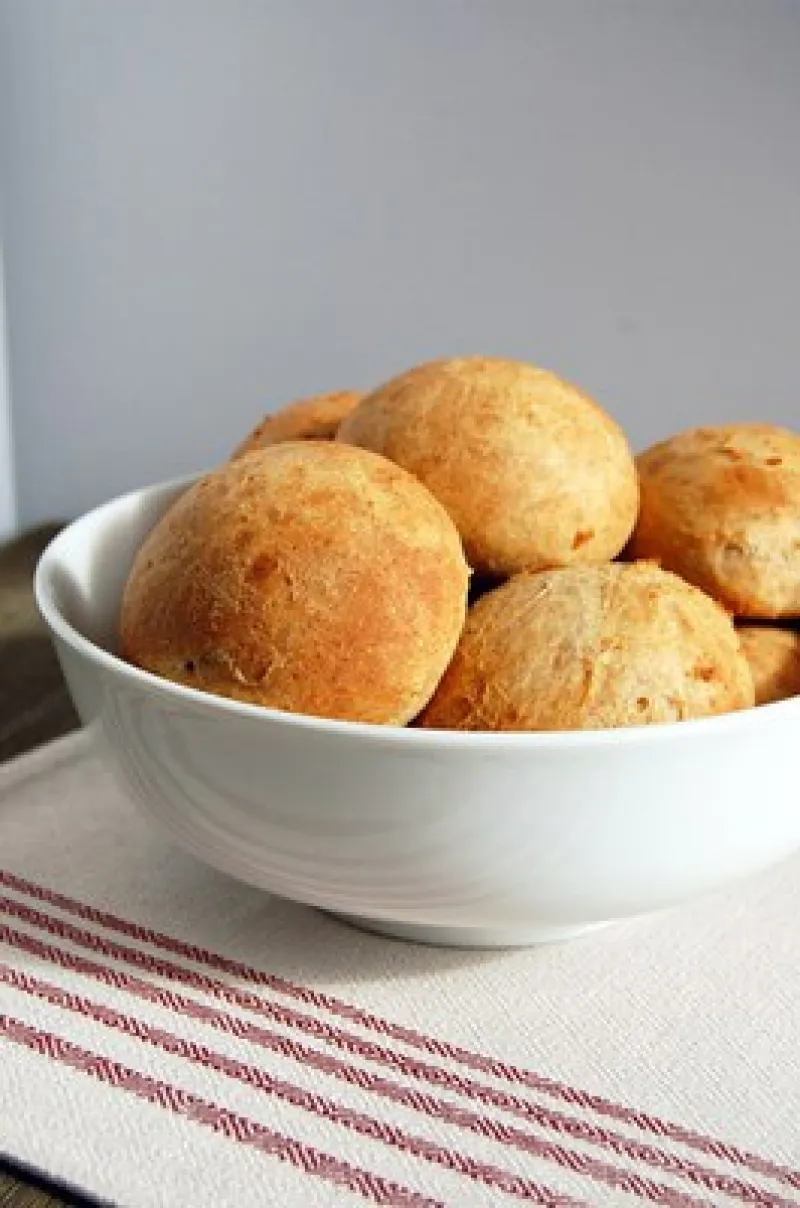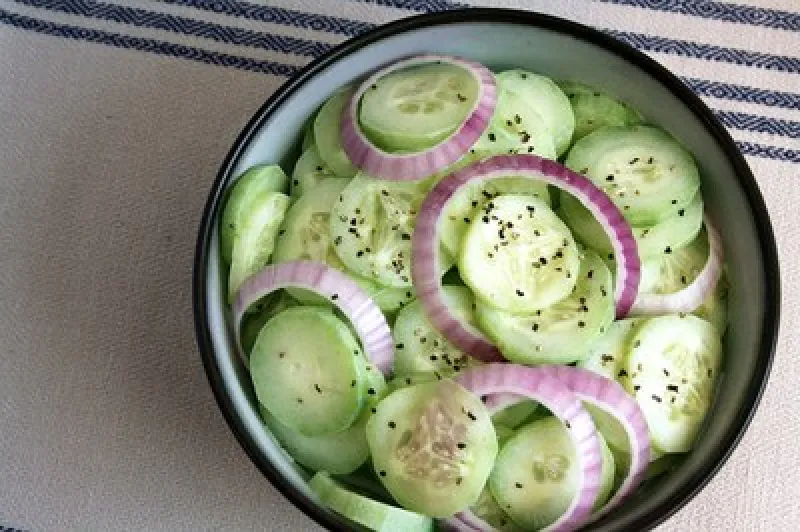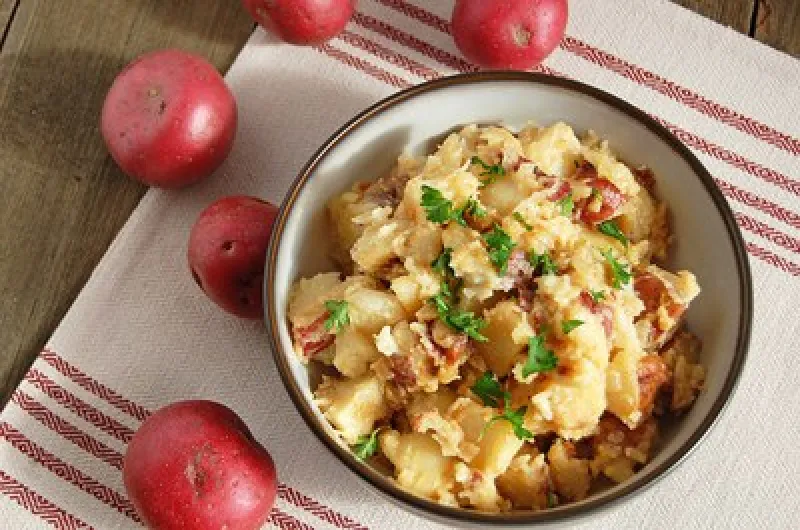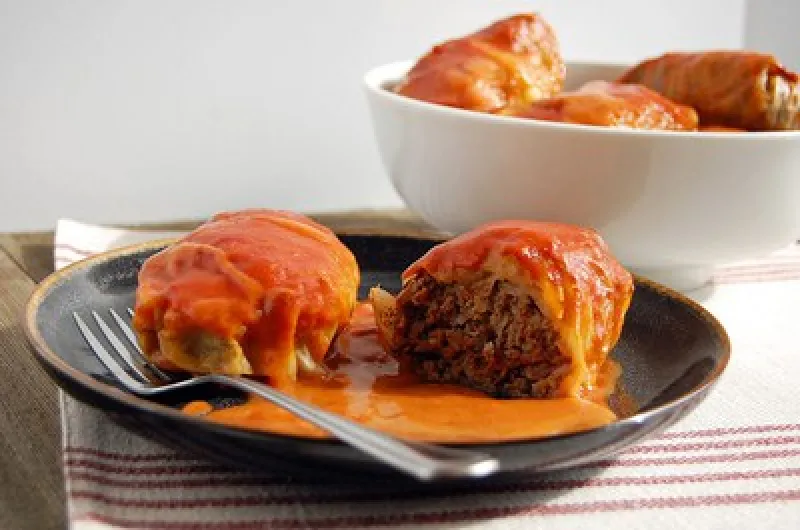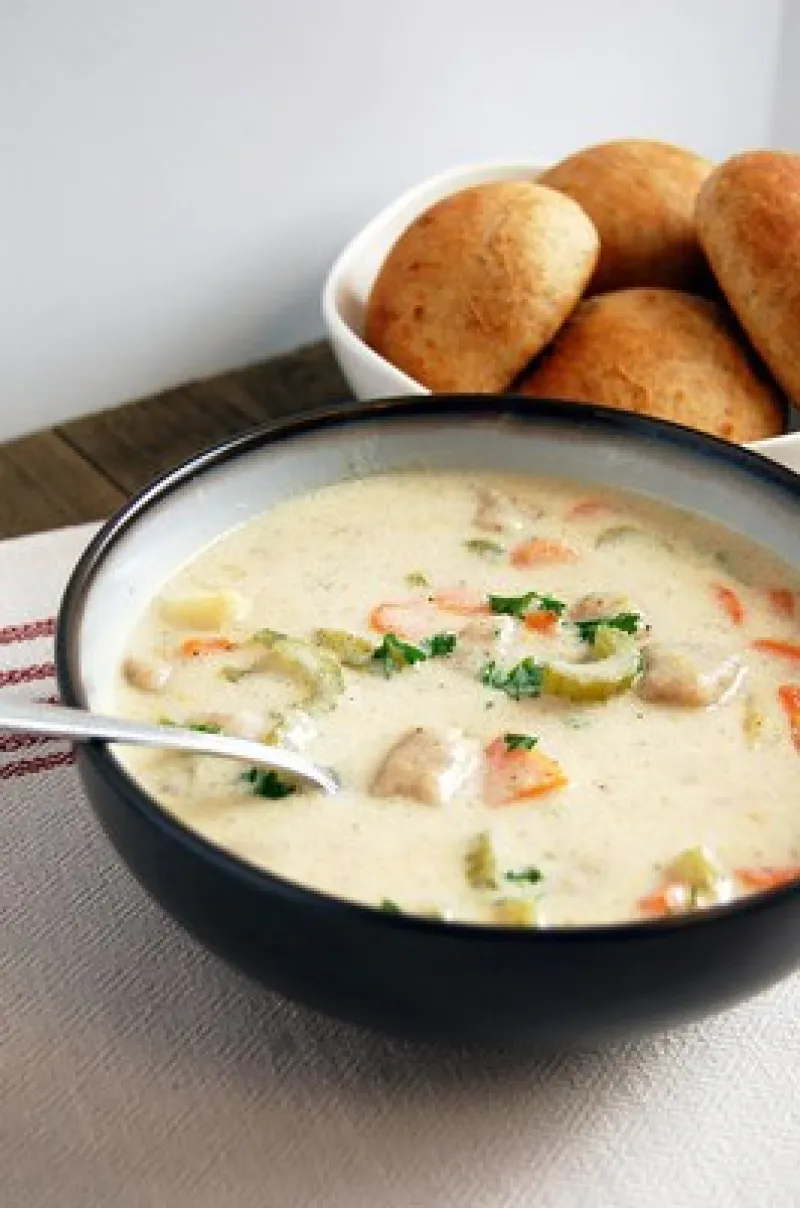Knoephla (“neffla”) is related to the modern German word “knopfle,” meaning “little button.” Knoephla is a type of dough that is used in a flavorful creamy potato soup. With a few modifications, this knoephla soup recipe was created to be equally delicious and a bit more nutritious.
Cook’s notes: The original recipe used regular chicken base and was limited in vegetables. We added carrots and celery, used a lower-sodium chicken base and substituted whole-wheat flour for half of the white flour to add fiber. The dumplings, therefore, will be grayish instead of creamy white.
Using a low-sodium base in place of the regular base decreased sodium. Substituting whole milk or half and half for cream decreased calories, total fat and saturated fat. As a result, dietary fiber, protein, vitamin A, vitamin D and potassium increased in the updated recipe.
Did you know? The daily recommendation for sodium is about 2,300 mg per day. On average, American consume more that 3,400 mg per day. Consuming too much sodium can increase the risk for hypertension (high blood pressure), kidney disease and fluid retention.
¼ c. butter, unsalted
6 c. baking potatoes (about 3 large), peeled and cubed
½ c. onion (about 1 small onion), diced
¾ c. celery, diced
¾ c. carrot, diced
½ tsp. pepper (or to taste)
3 c. whole milk
6 c. chicken broth
Knoephla (dumpling) recipe:
¾ c. whole-wheat flour
¾ c. white flour
7 Tbsp. whole milk, or more as needed
1 egg
2 tsp. dill weed
2 tsp. parsley
½ tsp. ground black pepper (or to taste)
½ tsp. salt
Melt butter in large skillet over medium heat. Saute potatoes, carrot, celery, onion and pepper until vegetables are tender, about 20 minutes. Stir 3 c. milk into potato mixture and heat until almost boiling, about five minutes. Remove skillet from heat. In separate pot, bring chicken broth to a boil.
To make knoephla (dumplings): Combine whole-wheat and white flour, 7 tablespoons milk, egg, dill, parsley, salt and pepper. Add more milk a tablespoon at a time until dough is stiff. Roll dough into ½-inch-thick ropes. Cut ropes into ¼-inch pieces with a knife or kitchen shears. Drop pieces into boiling broth. Cover pot and reduce heat to simmer until knoephla begin to float, about 10 minutes. Stir potato mixture into broth and knoephla. Simmer until potatoes are tender.
Makes 10 (1-cup) servings. Each serving has 260 calories, 8 g fat, 9 g protein, 39 g carbohydrate, 3 g fiber and 480 mg sodium.
Source: Adapted from several recipes.
